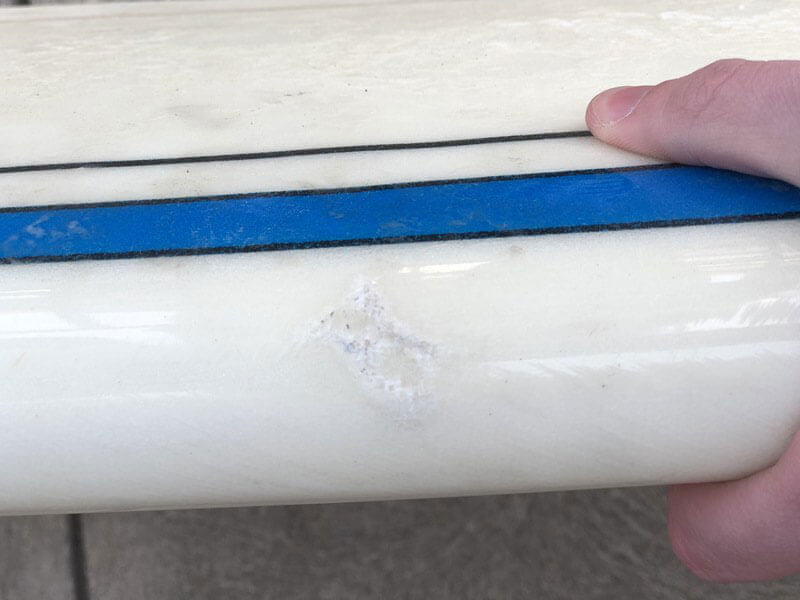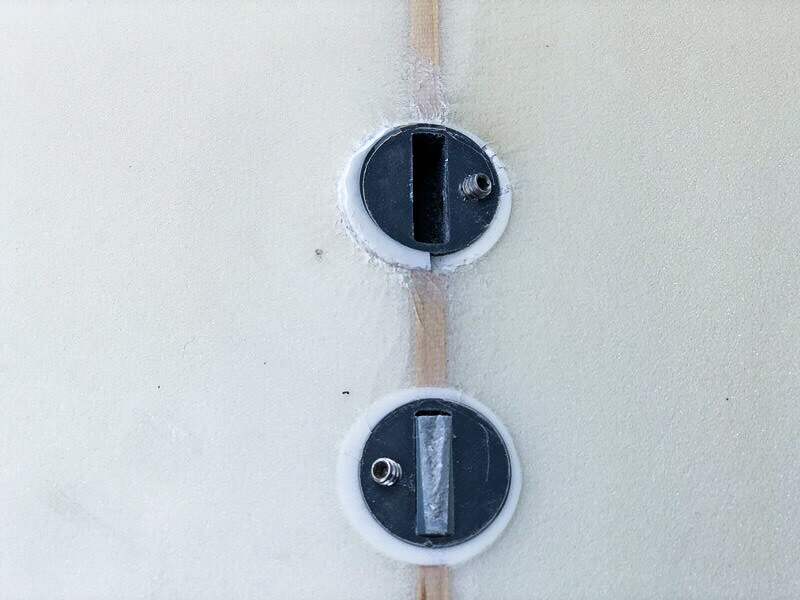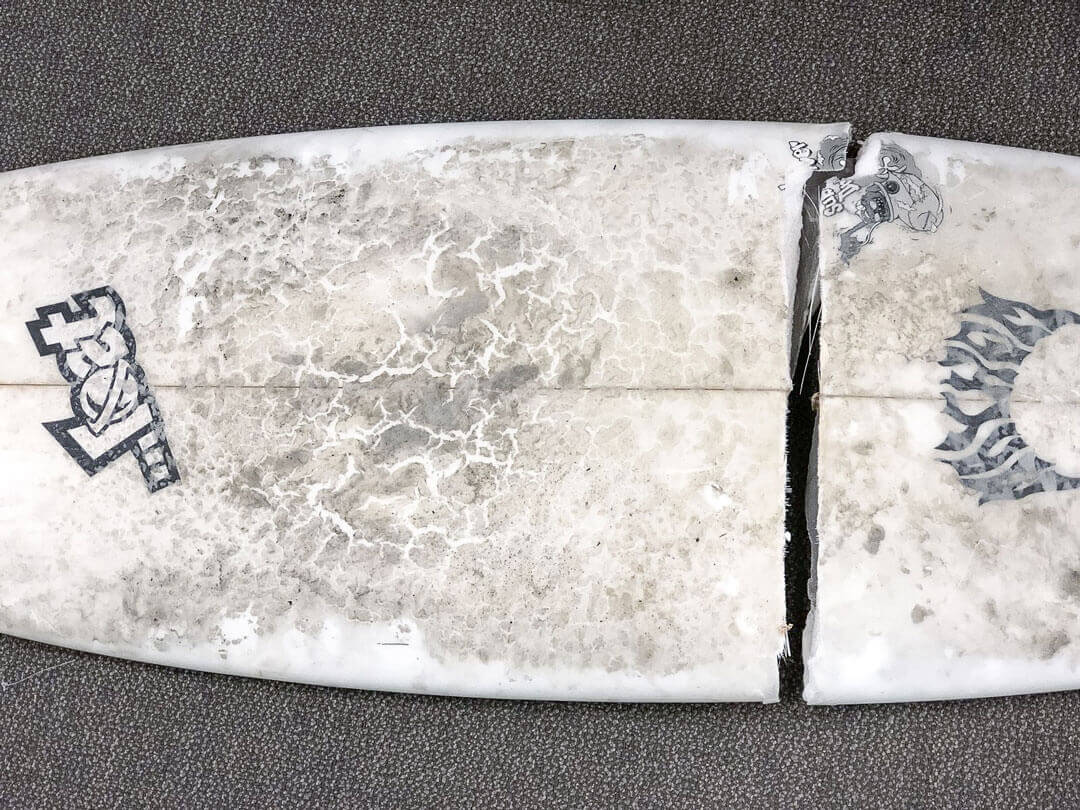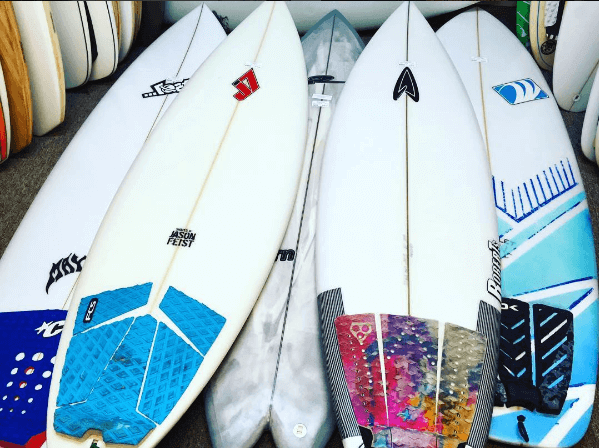Buying a used surfboard can be an awesome way to save money, but can also be a complete waste of cash if you don't know make the wrong decision. Used boards can be found down at your local surf shop, on craigslist, or at your neighbors garage sale - and following these simple steps will save you a headache in the long run.
There’s an art (and science) to buying used surfboards and we have the guide to help you out.
Check Out the Board In Person
This one should go without saying - and is the most important thing that you can do when looking to buy a used surfboard.
We highly-recommend that you visit your local surf shop to check out the surfboards in person. This allows you to check out every inch of the surfboards so you can see their condition. Chances are the shop crew has already examined the board and can give you advice on whether or not the board is water tight or needs some ding repair.
It’s not a good idea to buy used surfboards online, regardless of how cheap or sick they may look. You won't really know what their real condition is until you’ve already paid for them, and unfortunately - some folks selling used boards online try to hide damage in their photos. If you must buy online - shop on craigslist that shows local results. This will allow you to check out the board in person before you decide to make the purchase.
What To Look For
When a used surfboard catches your eye and your deciding whether or not to pull the trigger, these are the things you should look for before you make the decision. Be sure to ask the person you are buying the used surfboard from to clean off the wax and grime so you can properly inspect the board.

A good rule of thumb is that if you can catch a fingernail on a damaged area, it will need repair. Careful though! No one likes a fiberglass splinter.
Check Every Inch For Dings
You can’t expect a perfect used surfboard. If the board is used there's a very high chance that there may be minor cracks and dings.
What is a ding you ask? It's an area of damage on a surfboard that has a crack in the fiberglass, sometimes exposing the foam core of the surfboard. Dings may vary greatly in severity, but nevertheless should be sealed properly before bringing it into the water for a surf. This will ensure that the board remains dry on the inside, and therefore remains strong.
Dinged boards can still be saved..although of course, you should consider how much you may have to pay to have them professionally repaired. If you happen to find a board that has several dings, some of which are a bit yellow in the ding area - skip such boards even if they’re really cheap unless your ready to throw some of your hard earned in cash into ding repair. In this case it may be worth considering just getting a new board!
Check For Water Damage
Water damage indicates too much abuse and lack of care and maintenance. Water damage occurs when a board gets a ding and it goes on without repair. This cause water to slowly saturate the foam of the surfboard, and it eventually begins to rot the inside. This can lead to added weight, delamination, and an overall weak surfboard.
To spot water damage in a surfboard - look for signs of excessive discoloration (usually brown or yellow) and delaminations. If you find anything like this then do not move forward. It's best to avoid boards with water damage, as it's almost certain that they don't have much life left.

Inspect the Fins & Finboxes
Make it a point to check the area where the fins attach to the board. If they’re non-removable (i.e. glass-on fins) and showing cracks or other signs of damage, then it’s best to avoid the board altogether unless you’re willing and ready to replace them, which will cost a pretty penny.
If they are a removable fin system - check the area around the boxes that the fins sit in to make sure they are free of cracks and dings. Take a quick peak inside the finbox to look for any cracking in the plastic as well - as this is quite common especially long board center boxes.
If a finbox is busted it can cost a lot of time and money to fix.
In the picture to the right, the FCS plugs are still in the board, but if you look carefully you can see that the tip one is cracked around the edges. This type of damage needs to be addressed before it hits the water!
Perform the same check on the leash cup too!

Search for Signs of Buckles
A board is considered buckled if there’s a crease across it - indicating that the boards was either snapped in two at one point before repair, or was closed to being snapped. This is the equivalent of a board being "totaled", but still can be fixed by a professional ding repair shop. This is not a simple ding repair, so if you not willing to shell out a bit of cash to get it fixed properly (and it can be pricy) than you should most definitely pass on the board.
Be mindful of the location of the buckle If it's high up on the nose of the board, than it is not as big of an issue, as that is not a crucial part of the board. However if the board is buckled in the middle or lower half, than consider it a hard pass.
You should be careful of paint and stickers that shouldn’t be there. We've seen many people use this technique to hide buckles and other damage when they are going to sell the board.
Check for signs of previous repair
You can easily spot areas that have been previously repaired. Don't stress too much, used surfboards that have been repaired can still be a good score. In fact, those that have seen previous repairs are usually the boards that go for cheap. Make sure to check if the repairs have been done properly and seem hard and water tight. Press with your finger firmly around the repair and check that the entirety of the ding is feels hard. If the area around the previous repair is cracked or seems soft - chances are it will need a trip back to the repair shop.
Again, beware of ares with excessive spray paint. Always give those spots a good look over.
Take Your Time
Don't rush through the process - take you time looking over the board!
No need to feel pressured into buying - take the time to checkout every square inch of the board and ask questions if you see something that raises a flag. You’ll have no one to blame but yourself if you end up buying a dud because you didn’t do your due diligence. Once you’ve checked every inch, check it again.
Compare Different Boards
Sure we might be a bit biased, but we recommend that you buy used surfboards at a surf shop, as there’s a good chance that there are many to choose from. This way, you can compare several boards and choose the one that’s in best shape and would work best for you. Surf shop staff can also help you analyze the boards and look for signs that the board may need a repair. Don't hesitate to ask questions.
See How It Feels Under Your Arm
This isn’t weird at all... even professional surfers do this before buying a board. Carry the board under your arm, and try to sense if it feels like the magic board. Remember, this is how you’re going to hold the board while you’re sprinting down the beach after that set wave you just watch roll through. If it doesn't feel right when standing still, then you can forget about it feeling perfect in the water.
Check the weight of the board and make sure it feels balance. A board too nose heavy or tail heavy might indicate some prior water damage, or excessive ding repair.
You're looking for that, “Ah, this is the one!” feeling.

Ask For Help
Whether you have a buddy who has been surfing for a long time, or your in the shop and spot the boardroom expert hanging around - don’t be afraid to ask for help! Just make sure that you can trust the one that you’re asking. This is especially true if this is your first time buying a used surfboard.
If you have any questions and don't know who to ask - hit the little chat icon on the bottom right of the page or shoot us an email and we can help you out!